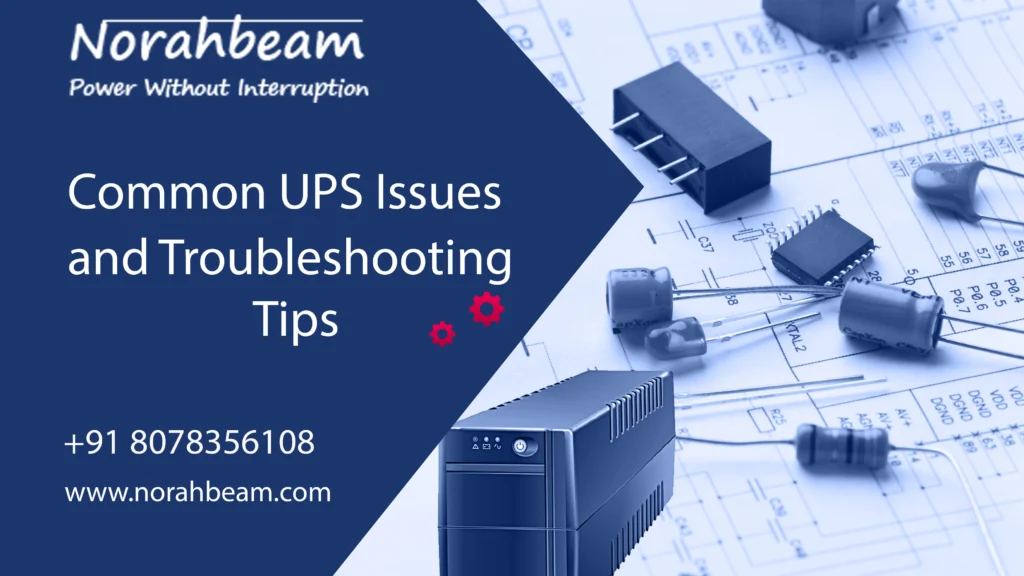
A Guide to Common UPS Issues and Troubleshooting Tips
Uninterruptible Power Supply (UPS) systems are the guardians of our electronic devices, ensuring a continuous power supply in the face of electrical challenges. However, like any technology, UPS units may encounter issues over time. Here, we’ll explore some of the common issues users might encounter with their UPS systems and provide practical, step-by-step troubleshooting tips to help you swiftly address and resolve these challenges.
Identifying Common UPS Issues
Battery Failure
- Explore the symptoms of a failing UPS battery, such as frequent beeping or an inability to hold a charge.
- Discuss how age, overuse, and environmental factors can contribute to battery issues.
Overloading
- Explain how overloading occurs when the UPS is asked to supply more power than it can handle.
- Highlight the signs of overloading, such as unexpected shutdowns or erratic behavior.
Faulty Wiring and Connections
- Address issues related to loose or damaged power cords, input plugs, or output connections.
- Emphasize the importance of secure and properly connected wiring for UPS functionality.
Power Surges and Spikes
- Discuss the impact of power surges and spikes on UPS systems.
- Explain how surge protection features work and why they are crucial for maintaining UPS health.
Software or Firmware Glitches
- Explore issues related to outdated or malfunctioning UPS software or firmware.
- Emphasize the importance of regular updates to ensure compatibility and optimal performance.
Troubleshooting Tips
Battery Testing
- Provide a guide on how to test UPS batteries, including using built-in diagnostics or external tools.
- Offer recommendations on when and how to replace batteries if needed.
Load Management
- Explain how to manage the load on the UPS by assessing connected devices and redistributing power if necessary.
- Discuss the importance of staying within the specified load capacity.
Check Wiring and Connections
- Offer a step-by-step walkthrough on inspecting and securing all wiring and connections.
- Provide visual aids to help users identify potential issues.
Resetting and Rebooting
- Guide users through the process of resetting or rebooting their UPS system to resolve software or firmware glitches.
- Highlight the importance of following manufacturer guidelines for these procedures.
Monitoring and Logging
- Encourage users to regularly monitor UPS logs and alerts.
- Explain how to interpret log entries and take corrective action based on the information provided.
Contacting Technical Support
- Discuss when it’s appropriate to contact the UPS manufacturer’s technical support for assistance.
- Provide guidance on preparing relevant information to expedite the troubleshooting process.
Proactive Maintenance to Prevent Future Issues
Establishing a Regular Maintenance Routine
- Emphasize the importance of proactive maintenance in preventing common UPS issues.
- Provide a checklist for users to follow in establishing a routine maintenance schedule.
With these troubleshooting tips, you can empower yourself to overcome common UPS challenges and ensure the continuous protection of your electronic devices. Regular checks, proactive maintenance, and swift responses to warning signs will keep your UPS system ready to tackle any power-related obstacle. Stay informed, stay vigilant, and keep your power protection strong


